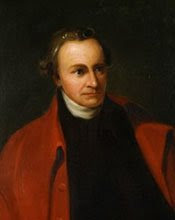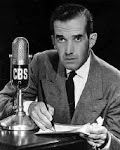Ten years following the cessation of the First World War, Arthur Ponsonby, a member of British Parliament published his ground-breaking study, Falsehood in War-Time: Containing an Assortment of Lies Circulated Throughout the Nations’ During the Great War. Ponsonby’s book begins with several quotes, the most well-remembered being “When war is declared, truth is the first casualty.” Although Ponsonby did not credit the author, most attribute the quote to US Senator Hiram Johnson who said in 1917, “The first casualty when war comes is truth.” It is more likely however that Ponsonby was recalling Greek playwright Aeschylus who in the fifth century B.C. wrote, “In war, truth is the first casualty.”
Ponsonby, with an eye to the next terrible conflict between nations, set out to prevent such bloodletting with his slim but powerful volume. He declared,
“None of the heroes prepared for suffering and sacrifice, none of the common herd ready for service and obedience, will be inclined to listen to the call of their country once they discover the polluted sources from whence that call proceeds and recognize the monstrous finger of falsehood which beckons them to the battlefield.” 1
While Ponsonby recognized that most of the falsehoods of World War One had their origins in official propaganda, he also recognized the effect such propaganda had on the well-meaning masses. He wrote, “A sort of collective hysteria spreads and rises until finally it gets the better of sober people and reputable newspapers.”2 He points out that upon deciding for war, governments present one-sided justifications to support their actions. Ponsonby explains that while a moment’s reflection by any thinking person would reveal “such obvious bias cannot possibly represent the truth,” most people willingly delude themselves in order to justify their own actions.
Ponsonby identifies the principal methods of propaganda used during World War One. There is the deliberate lie, the lie heard but not denied, the mistranslation, the omission of passages from official documents, deliberate exaggeration, the concealment of truth, the faked photograph. Perhaps the most important element that Ponsonby considers is “the general obsession, started by rumour and magnified by repetition and elaborated by hysteria, which at last gains general acceptance.” 3
Few would be so naïve to think that such falsehoods ceased with the armistice of 1918. In fact recent discoveries have revealed that information provided to the public regarding Vietnam’s “Gulf of Tonkin” incident of August 1964 was falsified to make it appear that North Vietnamese gunboats had attacked an American destroyer patrolling international waters. This incident was the catalyst President Lyndon Johnson needed to escalate the Vietnam War. 4
More recently during President George H. Bush’s Persian Gulf War of 1990-91, it has been revealed that a major public relations firm, Hill and Knowlton, headed by Craig Fuller, former chief of staff to Bush, helped package testimony about Iraq’s August 1990 invasion of Kuwait.5 A moving testimony during a Congressional caucus hearing by an “anonymous Kuwaiti refugee girl called “Nayirah” turned out in fact to be the daughter of Kuwait’s ambassador to the United States. Hill and Knowlton packaged the young girl and even rehearsed her on behalf of their client, Citizens for a Free Kuwait, an organization funded by the Emir of Kuwait.6
Another harrowing tale of Iraqi atrocities was related during a televised session of the UN Security Council on Nov. 27, 1990. While Fatima Fahed’s account of Iraqi crimes moved audiences, it was not revealed that this “refugee” was in fact the wife of Sulaiman Al Mutawa, Kuwait’s minister of planning. In addition she was a well-known Kuwaiti television personality. During an interview with one of the leaders of Citizens for a Free Kuwait, the question as to why Fahed was chosen to speak to the UN was asked. Fawzi Al-Sultan replied, “Because of her professional experience, she is more believable.” 7
In the more recent Iraq war the public has been considerably more skeptical of the official party line. The propaganda campaign issued from the White House was initially unfocused and sloppy. It appeared that President George W. Bush was attempting to find the note that would resonate best with the American people. We were told of Saddam Hussein’s brutality against his own people. We were told of alleged connections to Al Qaeda and international terrorism. Ultimately however, it was the vaguely defined Weapons of Mass Destruction (WMD) program which won the day. References to the 1988 gassing of Kurds stirred the collective memory of the American public recalling the gassing stories of the Second World War. Saddam Hussein was portrayed as a modern day “Hitler.”
While it may appear that truth is ultimately revealed in matters of national conflict, one war, the costliest of the last century is rarely subjected to the historian’s microscope. The Second World War remains “the good war.” Those who fought during it or even lived through it are referred to as “the greatest generation.” Here the one-sided accounts and obvious bias are embraced today as if that war were still in progress.
To be sure there has been investigation and debate over the events surrounding the attack on Pearl Harbor. While the official position has always been one of a sneak attack, a number of revisionist historians have amassed evidence that Roosevelt knew in advance of the attack and even maneuvered the Japanese into striking the first blow, so that he could use the event as a backdoor to the war in Europe. Likewise, revisionists from Harry Barnes to Gore Vidal have questioned the necessity of the two atomic bombings of Japan. To save hundreds of thousands of American lives by preventing a ground assault of Japan, Truman ordered the atom bombing of Hiroshima and Nagasaki, or so the court historians tell us. Revisionists counter that scenario by pointing out that the Japanese had already made peace overtures and that the strikes were a means of intimidating the Soviets.
The war against Nazi Germany, however, is rarely questioned outside orthodox parameters. Those who attempt to debunk any element of the official propaganda are subjected to all forms of ad hominem attacks. Today it is virtually impossible to say anything positive about the German military during the Second World War, or to call into question any of the tactics used by the Allies to defeat them. Even the Soviet army, known for its vast brutalities against civilian populations is rarely called into question in the United States.
The Second World War was of course no different from wars that came before or after with its one-sided propaganda designed to portray the Allied cause as just and the Axis cause as pure evil. People became what Ponsonby called “willing dupes,” accepting every crime, every outrageous charge without question. What remains unique is the general acceptance of this story even 60 years after the event. Ponsonby wrote, “In war-time, failure to lie is negligence; the doubting of a lie is a misdemeanor, the declaration of the truth a crime.” 8 Today, in an age of perpetual war, truth may be declared a crime at any time. Those who dare shine a light on inconvenient aspects of the Second World War are denounced viciously by those who remain emotionally blind, are willing dupes, or sometimes even lying benefactors.
Still there are those of us who believe that a proper understanding of the events of the Second World War is critical, certainly for our present, if not for our future. There are those of us who, paraphrasing Ponsonby, resent having our passions roused, our indignation inflamed, our patriotism exploited and our highest ideals desecrated by concealment, subterfuge, fraud, falsehood, trickery, and deliberate lying by those in whom we have been taught to repose confidence and to whom we are enjoined to pay respect.
Notes:
- Arthur Ponsonby, Falsehood in Wartime, Institute for Historical Review, Costa Mesa, CA., 1991, p.19.
- Ibid, p. 14.
- Ibid. p. 20.
- “Tonkin Gulf Reports Cooked? Historian's research finds intelligence errors covered up.” San Francisco Chronicle, October 31, 2005. Online: http://www.sfgate.com/cgi-bin/article.cgi?file=/c/a/2005/10/31/MNG99FGN521.DTL
- Morgan Strong, “Portions of the Gulf War were brought to you by…the folks at Hill and Knowlton.” TV Guide, February 22, 1992, pp.11-12.
- Ibid. p.12.
- Ibid.
- Ibid. p. 27.


















No comments:
Post a Comment